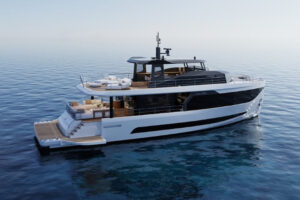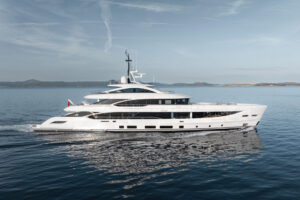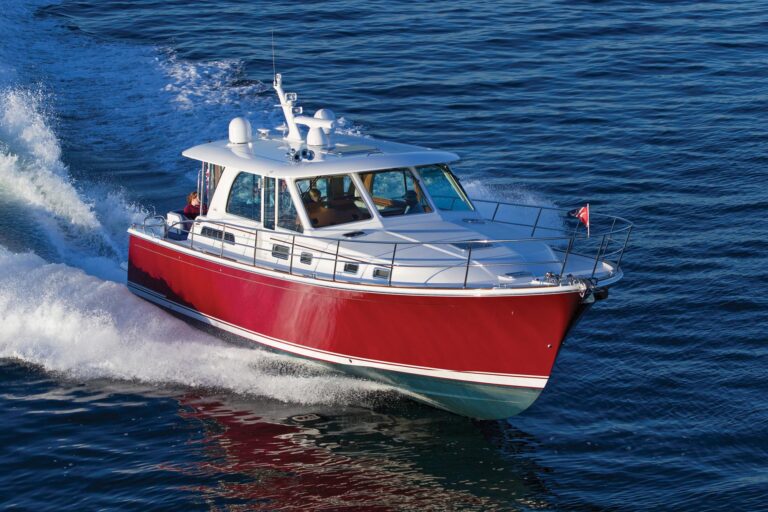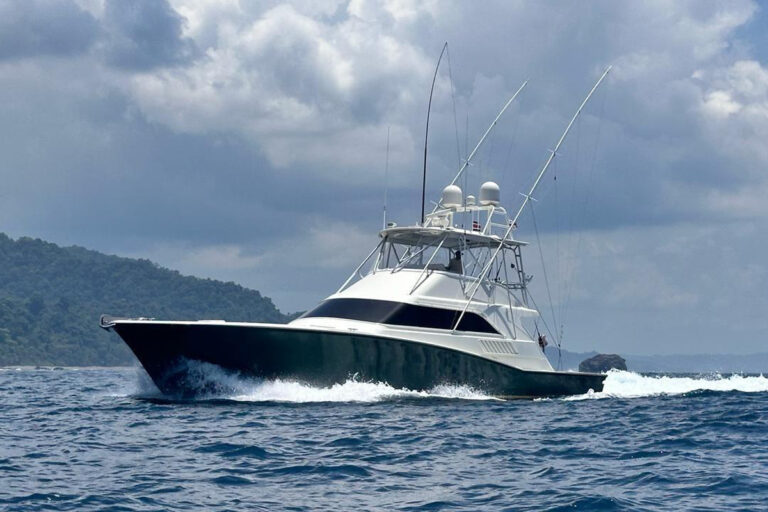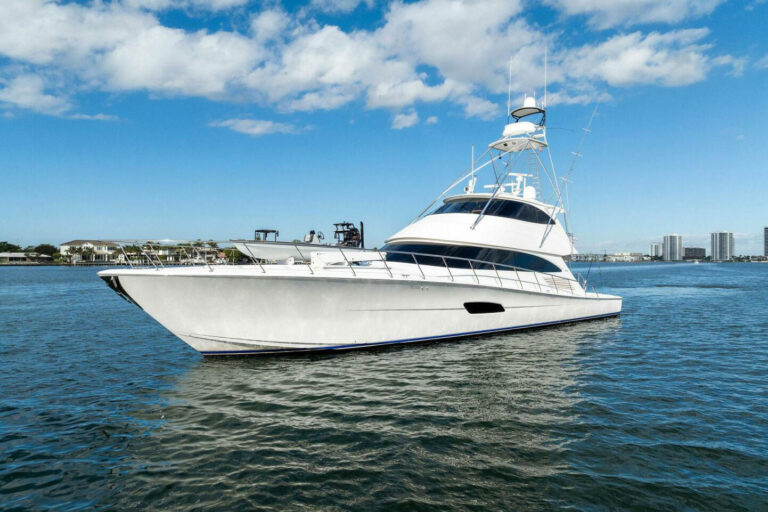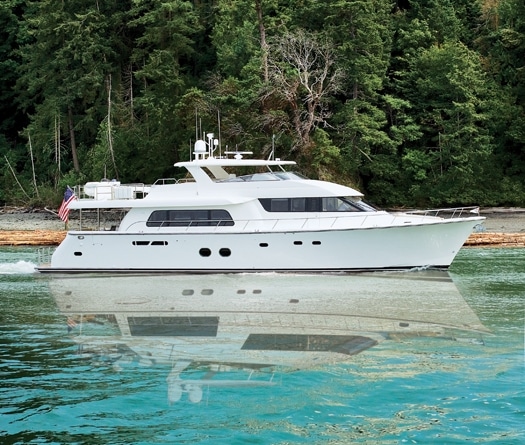
ytgfeb22pacmar85525.jpg
The automakers of Detroit have ingrained car buyers with the dictums of “Change Is Good” and “New Is Better,” all in a need to justify their annual change of models. It is planned obsolescence at its most obscene, and it flies in the face of down-to-earth business sensibilities such as “Don’t Tinker With Success.”
New isn’t necessarily better, of course, and the marketing need for year-to-year change led to such losers as the Edsel and the Cadillac Cimarron. Flying in the face of the 12-month Detroit life cycle, Volkswagen showed the world that lack of change can be a good thing, producing some 21 million Beetles over four decades-the longestrunning, most-produced automobile of a single design. That isn’t to say the ubiquitous Beetle was unchanged. It was improved every year as, pardon the pun, the bugs were worked out and technology altered everything from the engine to the tires to the windshield wipers.
Boatbuilders have tried to emulate the Detroit annual change to their detriment, because the business models are so dissimilar. The annual cost of design and tooling for a new car can be spread over tens of thousands of vehicles. But even a successful yacht, such as the Bertram 31, numbers less than 2,000 after 25 years of production. One sees that change for change alone is costly and, well, dumb.
Pacific Mariner was a success story from its first launch-a 65-footer that was, except for your toothbrush, essentially a turnkey yacht. It was embraced because it provided owners with carefully selected equipment that ranged from the davit to the watermaker, from electronics to galley appliances. Décor was flexible, of course, but the basic yacht remained the same.
By eliminating costly layout changes and standardizing the equipment, Pacific Mariner was able to reduce costs and focus on worldclass construction. The 65-footer led to an 85-footer, and Westport Yachts eventually acquired the company-a smart move that benefited both companies. Westport now had an entry-level yacht below their 98-footer, and Pacific Mariner enjoyed the advantages of this vastly experienced builder of megayachts.
But every fairy tale needs a dark side and, while building hull number 14 of the 85s, fire swept through the fiberglass shop, destroying the all-important hull and deck molds. The way Westport responded to this crisis, however, should be a textbook example for MBA programs.
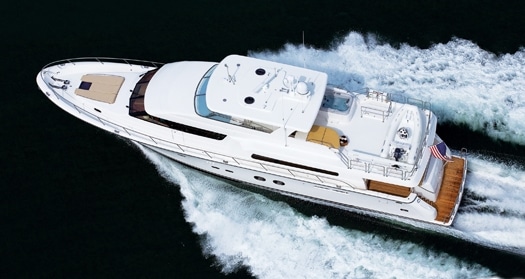
| | |
There was no question Westport wanted an 85 in their line, but should they retool the original or create an allnew yacht? While wrestling with that puzzle, they needed to keep their experienced build team together and the answer was to reactivate construction on a pair of 65-footers. The molds were in good shape, and this provided breathing room to regroup.
The original Pacific Mariner 85 was a Bill Garden design and, for those who know the work of this talented Northwest naval architect, it won’t be a surprise that the 85 was fast, seaworthy, and economical. Westport wisely chose to keep the original hull form, but to modify the previously angular superstructure to match the softly rounded contours of larger Westports. The two 65s were sold, the company returned to building 85s, and they now have three “new-old” 85s in the water. As with all fairy tales, everyone is living happily ever after.
The refreshed Pacific Mariner 85 is delightful. With four large staterooms plus crew quarters, this is a gracious, timeless yacht that fills a niche: small enough to be handled by a family, yet also a seaworthy cruiser.
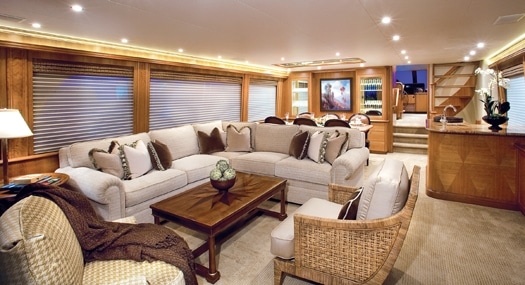
| | |
The saloon seems large for an 85-footer, and it features a casual settee facing a pop-up 50-inch television complete with a Kaleidescape entertainment system with Crestron controls, Blu-ray Disc player, and surround sound. Just forward is a dining table for six, opposite a full wet bar. With large windows and impeccable raised-panel mahogany (or optional cherry) joinery, this is a yacht that is as suitable as a liveaboard as she is hosting a large party.
The pilothouse is separated by bulkheads, which benefit the galley by allowing a home-sized fridge and cooktop with full backsplash on the after bulkhead. The galley is fitted with granite counters, an array of GE and KitchenAid appliances, and a 22-inch flatscreen TV that allows the chef to steal ideas from Emeril. Just forward of the galley is an L-shaped dinette that turns the pilothouse into a country galley, and a day-head is tucked under the bridge stairs.
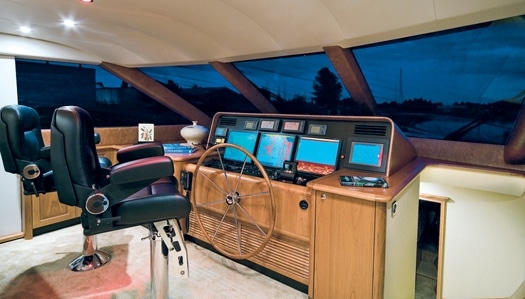
| | |
Underlining the thoughtful outfitting of the 85 is the lower helm, which has an electronics package that includes a Nobeltec Visual Navigation Suite (VNS) Max Pro with C-Map charts, XM Weather overlay, Furuno NavNet 3D chart plotter, and color sounder, all displayed on 19-inch NEC LCD displays. Naiad Multisea II stabilizers are standard, as is a 38-horsepower Naiad bow thruster. The Furuno system also includes a 72-mile digital HD radar, and other electronics include a Simrad autopilot and Icom VHF.
When it comes to accommodations, the Pacific Mariner makes no apologies. The master suite is a private getaway with separate stairs from the saloon (a stacked Whirlpool washer and dryer is in the foyer), and it spans the full beam amidships for the least motion. A king-size berth is on centerline, set in a mirrored niche between two large hanging lockers. The suite is pleasantly airy, with large ports, a bureau/vanity to port, and another bureau with desk to starboard.
No one will question who is the master of this yacht when it comes to the en suite head for the owner’s stateroom, which has a spa tub set in a marble surround, a spacious shower, and twin vanities.
Guests won’t feel slighted, however, because there is a VIP stateroom forward with a queen-size berth, cedar-lined closets, and private head with Headhunter commode and large shower stall. A second VIP-size stateroom is just aft to starboard, also with a queen berth and en suite head, and the last cabin is opposite, with twin berths and private head with shower.
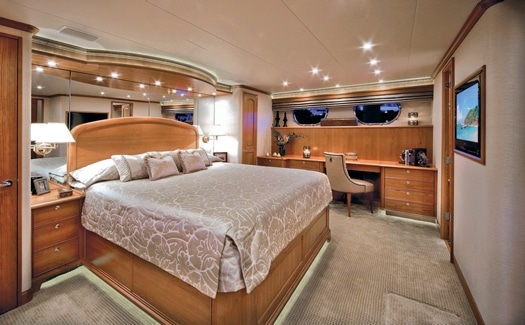
| | |
If you’re touring the Pacific Mariner 85, don’t leave the guest area until you’ve opened the hatch in the foyer. Below, you’ll find an amazingly spacious stowage area (for those darn guest suitcases!) and an equipment space. With 4 feet of headroom, you can scoot forward to service the bow thruster or go aft to inspect the electrical and plumbing runs. It’s a feature to please the toughest service technician.
The crew cabin is abaft the engineroom, with access through the transom door. A mini-lounge has a fridge, microwave, TV, and the second washer and dryer. A single berth is aft, the captain’s cabin has a double berth, and both share an enclosed head with shower. Don’t want a crew? It’s also perfect for a teenager, loud music and all.
Standard power is a pair of 1,500-horsepower MTU Common Rail 10V2000 CRM93-series diesels. The engineroom is clearly designed for ease of service and accessibility. The welded aluminum fuel tanks have both sight gauges and electronic monitors, and the Delta T demister system is isolation-mounted.
One improvement over the earlier 85s is the level of sound insulation. Thermal and sound insulation (3M Thinsulate) is everywhere, all equipment is on isolation mountings, double-density Soundown foam sequesters the engineroom, and K-Flex insulation swathes the piping, resulting in a remarkably silent and vibration-free yacht at all speeds.
The electrical side is no less thoughtful, with a pair of 30 kW Northern Lights gensets for primary power. These are backed up by a pair of 24 kVA ASEA shorepower converters that allow the Pacific Mariner to draw virtually any voltage or frequency from the dock and convert it to stable power on board. And, if the shorepower fails, these ASEA units light off a generator for seamless transfer and minimal power interruptions.
One area that benefits from the new superstructure molds is the bridge, which is both wider and longer than before. This width allows a 16-foot tender to be carried athwartships on the now-extended boat deck, giving more room for sun lounges or water toys. All can be launched with the hydraulic Nautical Structures 1,700-pound davit.
The skipper has a wide helm console with a chart area and stowage. The electronics package duplicates the pilothouse setup, and permanent wing stations have engine and thruster controls.
The forward half of the bridge is protected by a finely finished, stylish fiberglass hardtop that also serves as a mount for the electronics array, supported by two posts forward so vision remains good. The entertaining area of the 85 is totally complete, with a settee and alfresco dining table, a wet bar with two stools, an outdoor galley with grill, sink, and fridge and, of course, a four-person Jacuzzi spa.
With so much practice, Pacific Mariner has gotten all the details right, from the double rails on the gentle bridge stairway to the dogging pilothouse doors, from the wide boarding gates in the tall deck bulwarks to the 1,400 gallon-per-day watermaker.
Underway, the Pacific Mariner 85 is all you could desire and more. When it comes to hulls that combine a slippery economy with a seaworthiness honed by the rugged North Pacific, not many designers come close to Bill Garden.
Apply power to the 85 and she comes up onto plane smoothly, with barely three degrees of difference in running angle from idle to flat out. With a sharp and deep forefoot, she slices through seas without slamming, and the hard chine that sweeps from above the boot top forward to underwater at the stern serves both to soften the ride and throw spray aside.
Top speed is better than 25 knots, giving you the option to outrun bad weather and beat everyone to the best moorings. But throttled back to around 1,600 rpm and 15 knots, she uses just 42 gallons per hour while eating up the miles.
But my decibel meter felt neglected. In the pilothouse with the hammers down, the sound level was just 66 decibels-defined as “normal conversation at 3 to 5 feet.” Pull the throttles back, and the silence is deafening: sound readings in the mid-50s, or a “quiet suburb.” I glanced at the gauges to be sure the engines were running.
I won’t be giving away any secrets to say that I found the Pacific Mariner 85 delightful. Comfortable, solidly built, seaworthy, elegant, thoughtfully equipped what more is there?
Westport Yacht Sales, (954) 316-6364 (Florida), (206) 298-3360 (Washington); **www.westportyachts.com**


